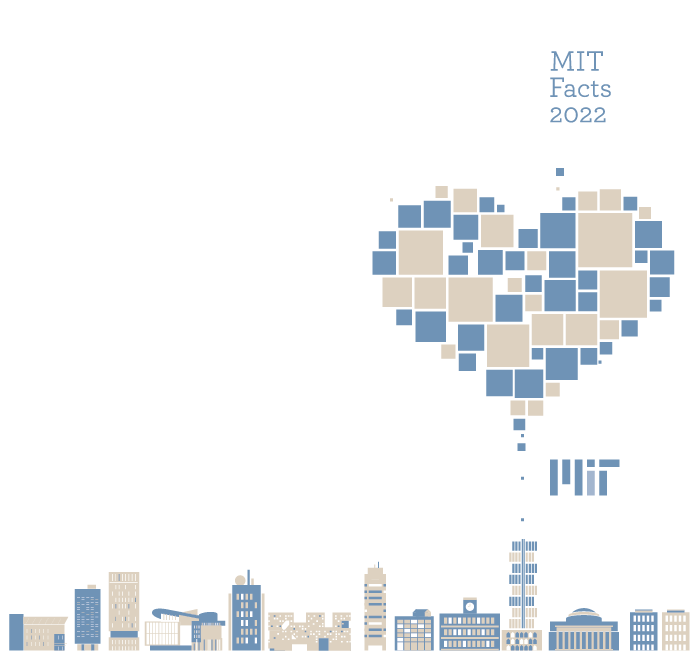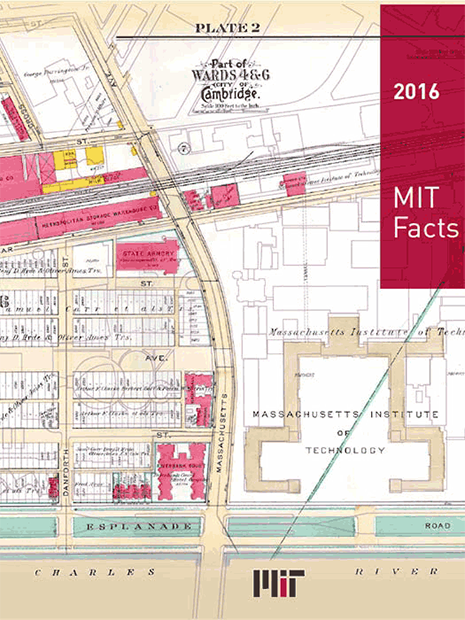Previous Editions
Skip to




2020
When people think of MIT’s campus, its iconic architecture or views of the Charles River and Boston skyline often come to mind. However, its thoughtfully planned and carefully curated green spaces are an integral part of the outdoor tapestry, tempering the bustle and noise of the urban environment. Large, grassy courtyards, numerous easy-to-find or tucked-away gardens, and abundant trees provide spots to gather with others or just enjoy your own company.
This year’s cover is a tribute to a few of the species of flora found on MIT’s campus. We hope these playful representations are a reminder to make time to enjoy your surroundings and care for the environment.
Cover design by Wing-Ip Ngan, ink design, inc.

2019
Cover design by Wing-Ip Ngan, ink design, inc. Illustration of the MIT.nano building by Wing-Ip Ngan, based on an illustration by Eric Keezer, MIT.
2018
This cover illustrates iconic buildings and sculptures on MIT’s campus. The images were die cut so that they opened up to reveal a message printed on an interior page. This book won three 2019 CASE Awards.
Cover design by Wing-Ip Ngan, ink design, inc.

2017
The MIT Campaign for a Better World—a bold and ambitious $5 billion fundraising initiative—was officially launched in May 2016. In the words of MIT Corporation chairman Robert B. Millard ’73, the Campaign “is an opportunity to re-inspire, reenergize, and recommit the MIT community to our shared vision and values, while amplifying the power of our students, faculty, and staff to shape the future by providing them with the resources they need to do their best work.”
The Campaign is guided by six priority areas that span the full breadth of the Institute: discovery science; health of the planet; human health; innovation and entrepreneurship; teaching, learning, and living; and strengthening MIT’s core (see Building MIT’s Resources for more detail). In his announcement of its launch, President L. Rafael Reif stated that the Campaign is MIT’s response to the urgent challenges facing humanity and an intensive effort to “seek the support of enthusiastic partners” that will help MIT accelerate positive change and amplify the impact of its work in the world.
In keeping with the Campaign’s focus on the greater good, this year’s cover calls to mind the global nature of MIT’s mission, vision, education, and reach, reminding us that the opportunities for us to build a better world are infinite.
For more information, visit betterworld.mit.edu.
Cover design by Wing-Ip Ngan, ink design, inc. Photo: Stocktrek Images/Getty Images.

2016
This year, MIT commemorates the 100th anniversary of its campus’s move from its original home in Boston to its current location along the Charles River in Cambridge, Massachusetts. MIT alumnus William Welles Bosworth designed the new Cambridge campus; its footprint is seen in the 1916 map on the cover.
As Professor Mark Jarzombek (‘71) described in his book Designing MIT: Bosworth’s New Tech, Bosworth’s vision encompassed several key goals that are as important today as they were 100 years ago. These include interconnected buildings and interiors that encourage and support interdisciplinary interaction and communication, and the ability of the physical complex to adapt to the constantly evolving nature of science, technology, and the MIT community.
The cover overleaf shows the outlines of the campus in the present day, its growth clearly evident. The darker lines of the Institute’s building footprints demonstrate that MIT’s commitment to Bosworth’s ideals of fostering communication and interaction through physical connection, and of adaptation to changing times and needs remains unchanged.
Cover design by Wing-Ip Ngan, ink design, inc. Transparent map image: 2016 campus map by MIT Department of Facilities and Wing-Ip Ngan. Cover map: Massachusetts, 1916, M.I.T. Plate, Massachusetts Institute of Technology, Vassar Street, Riverbank Court, Esplanade, Boston, Cambridge/Historic Map Works LLC/Getty Images.

2015
MIT has taken significant steps to bring the collective intelligence of the MIT community to bear on the challenges of climate change and sustainability. First, it created the Office of Sustainability to help the Institute realize its vision of the campus as a living laboratory where new ideas are tested. Then it launched the MIT Environmental Solutions Initiative, which includes the Abdul Latif Jameel World Water and Food Security Lab, to promote transformative, interdisciplinary research relating to the environment. Most recently, it launched the MIT Climate Change Conversation, a dynamic campus-wide conversation that aims to explore and assess the broad range of actions that MIT could take to make a significant positive contribution to confront climate change.
Each of these efforts represents MIT’s approach to tackling tough problems: engage the MIT community, foster the vibrant exchange of ideas, and inspire collective commitment to effect change.
Cover design by Wing-Ip Ngan, ink design, inc.